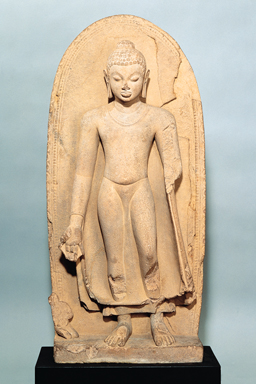
Figs. 5 & 6 Sarnath, the site where Shakyamuni Buddha gave his first teachings, emerged as one of the leading Buddhist centers of India during the Gupta period (ca. 319 – 500). Buddha sculptures from Sarnath (such as the one on the left) are characterized by their graceful proportions, relaxed postures, clinging drapery, downcast eyes, and slight introspective smiles. The Gupta Sarnath style, particularly the depiction of the Buddha's thin, clinging robes, was influential not only throughout India but was transported to Southeast Asia and adopted by artists there. The virtually transparent robes of the Buddha to the right are based on Indian images from Sarnath. However, the frontality of this image, its squarish face, broad lips and nose, and prominent joined eyebrows characterize Buddha images created in Thailand by the Mon.

